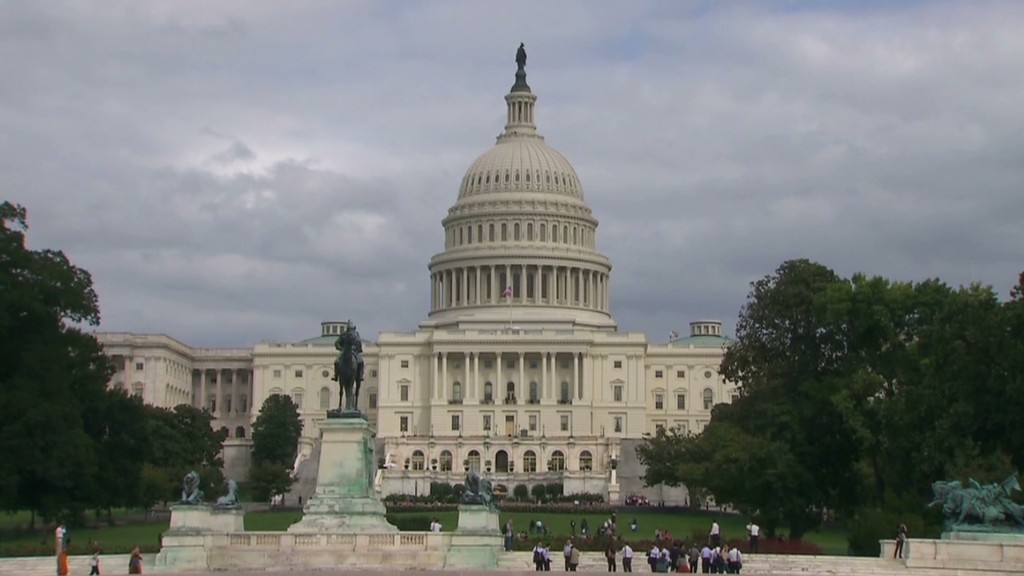
Investors are relieved that the fiscal cliff was avoided, thanks to last minute negotiations, but the debt problems facing the United States -- and in turn the stock market -- are far from over.
In fact, of the 30 investment strategists and money managers surveyed by CNNMoney, most said that uncertainty out of Washington remains the market's biggest headwind.
That's because the deal struck by lawmakers fails to address the debt ceiling and postpones most of the automatic spending cuts that were otherwise scheduled to take effect Wednesday.
"The last-minute deal was no grand bargain that would have reduced investor uncertainty about many long-term debt and deficit issues," said Gary Thayer, chief macro strategist at Wells Fargo Advisors. "Instead, investor uncertainty is likely to persist while the administration and lawmakers deal with the debt and deficit issues in incremental steps rather than all at the same time."
Related: 3 more fiscal cliffs loom
The first big hurdle for the market will be debt ceiling debate. The $16.4 trillion debt limit was officially hit on Monday, but the Treasury Department has bought lawmakers some extra time by starting a series of financial maneuvers that will create $200 billion of headroom and covers about two months' worth of borrowing.
That means lawmakers have to agree to raise the debt ceiling by late February or early March. And while experts aren't sure if the fight will be as ugly as the August 2011 debt ceiling debate, which led to the country losing its top credit rating by Standard & Poor's, and rocked the stock market, they know it won't be pretty
"Democrats and Republicans did the least they could possibly do to avoid the fiscal cliff, and the question now is will they do the least amount again when it comes to raising the debt ceiling, and how will the rating agencies view that," said Oliver Pursche, president at Gary Goldberg & Company.
Credit rating agencies have already warned that the United States could face a downgrade if Congress doesn't come up with a viable long-term plan to reduce the nation's debt.
Related: U.S. credit ratings test is yet to come
Once again, political brinkmanship will likely go down to the wire, said Peter Tuz, president of Chase Investment Counsel.
A repeat of the August 2011 debt ceiling debacle could spark a 10% stock sell-off , said Tuz, who expects that after "caving" on the fiscal cliff deal, Republicans will hang tough in the debt ceiling fight, and in particular, demanding spending cuts as part of the increase.

During the 2011 fight, Congress was finally able to reach consensus on raising the debt ceiling by also agreeing to a so-called sequester, which was slated to set off $1 trillion worth of broad spending cuts and reduce the budgets of most agencies and programs by 8% to 10% at the start of the year. But the fiscal cliff compromise delayed that by two months.
Now lawmakers have until the beginning of March to figure out a smarter way to reduce deficits.
"Congress has just kicked the can down the road for a couple months, so there are a lot of big negotiations still looming," said Tuz. "That's going to make for a very acrimonious and volatile trading environment."


